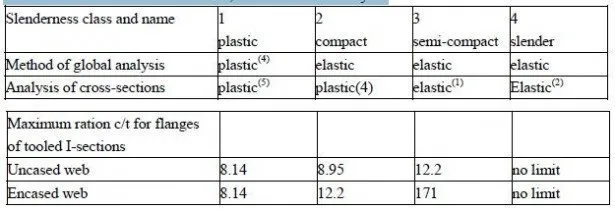All buildings are vulnerable to damage from fire, which is usually the first accidental design situation to be considered in design, and is the only one treated in this volume.
In the worked example, design is in accordance with the 1993 draft of Eurocode 4: Part 1.2,
Structural fire design. The concepts and methods used are now introduced. Italic print is used for terms that are defined in Eurocode 4: Part 1.2, or in Part 2.2 of Eurocode 1, Actions on structures exposed to fire.[36]
Buildings are divided by separating members into fire compartments. A fire is assumed to be confined to one compartment only, which must be designed to contain it for a specified failure time (or fire resistance time) when subjected to a given temperature-time environment or fire exposure. A standard fire exposure is given in Eurocode 1: Part 2.2, and other curves are available that depend on the fire load density (caloritic energy per unit area, for complete combustion of all combustible materials) within the compartment considered. These temperature-time curves are reproduced in furnaces for fire testing, and are simplified models of the effects of real fires. The walls, floor, and ceiling that enclose a compartment must have a separating function. This defined using two criteria ·Thermal insulation criterion, denoted I, concerned with limiting the transmission of heat by conduction, and ·Integrity criterion, denoted E, concerned with preventing the passage of flames and hot gases into an adjacent compartment. The structure of a compartment must have a loadbearing function, denoted R (resistance), to ensure that it can resist the design effects of actions specified for the fire situation including the effects of thermal expansion, for a period not less than the specified failure time. The fire resistance class of a member or compartment is denoted (for example) R60, which means that its failure time is not less than 60 minutes. Criterion I is met mainly by specifying minimum thicknesses of incom-bustible insulating materiais. These also contribute to meeting criterion E, which has structural implications as well. For example, excessive thermal hogging of a beam heated from below can create a gap between it and a separating wall below. Codes give limits to the temperature rise of non-exposed surfaces, relevant to criterion I, and detailing rules relevant to criteria I and E. Design calculations relate mainly to criterion R, and only these are discussed further, in this volume. It will be seen that, for practicable design, it is necessary to simplify the predictions of both the action effects and the resistances, to a greater extent than for cold design. This last term refers to the normal design for persistent situations and ultimate limit states.

